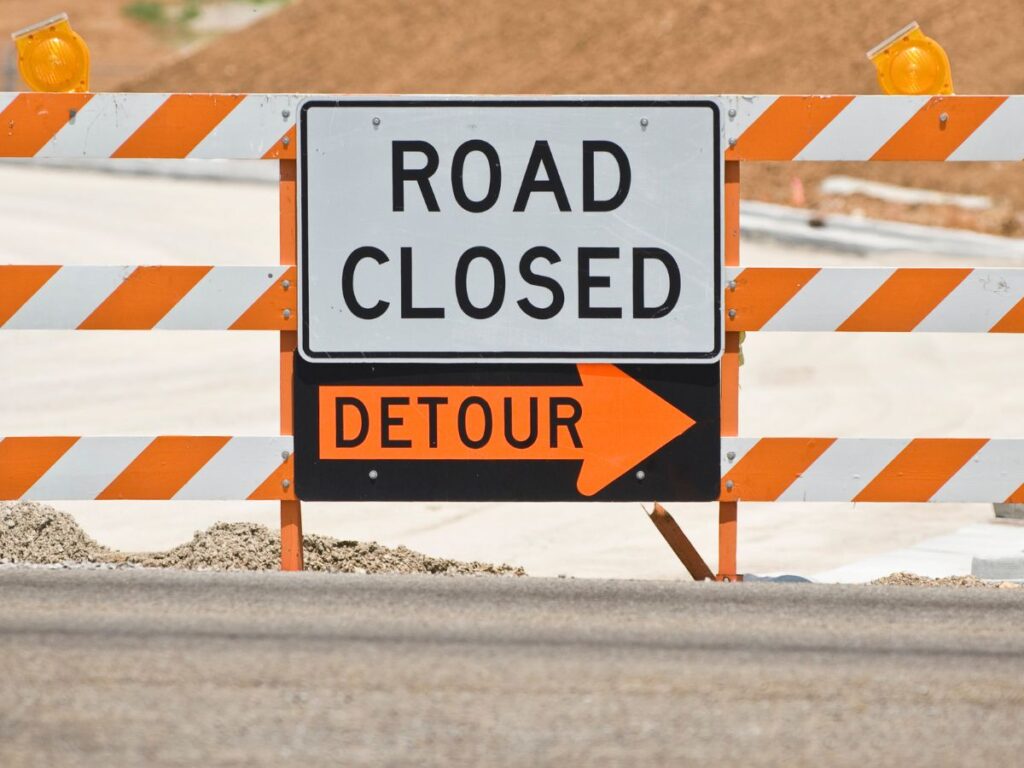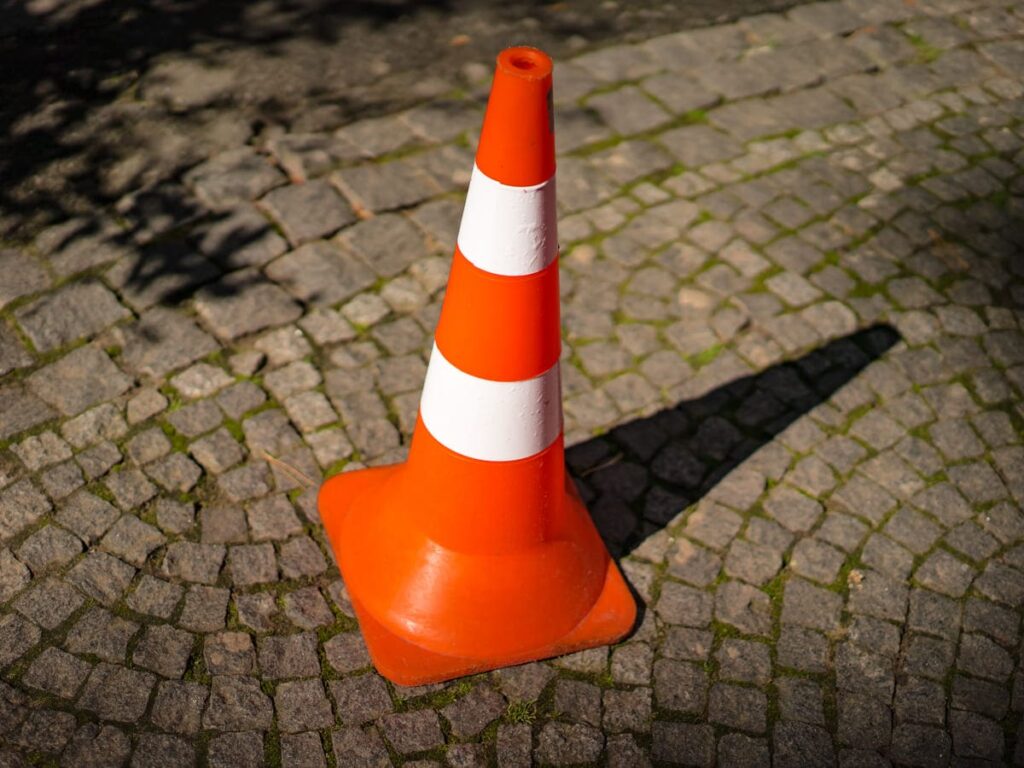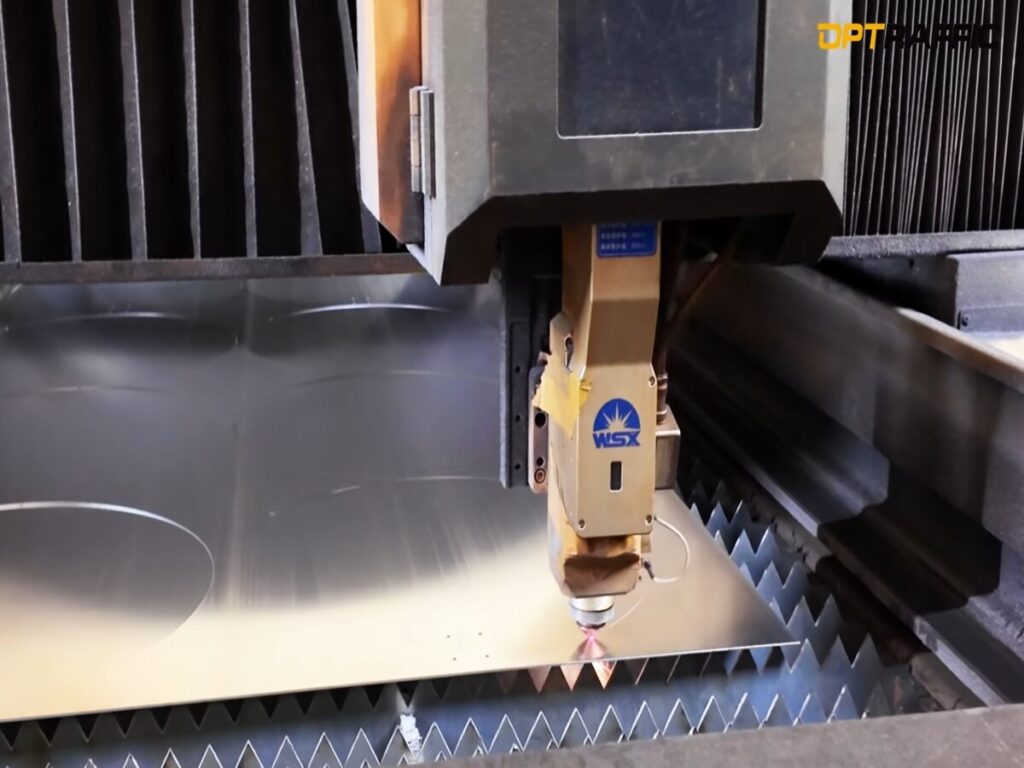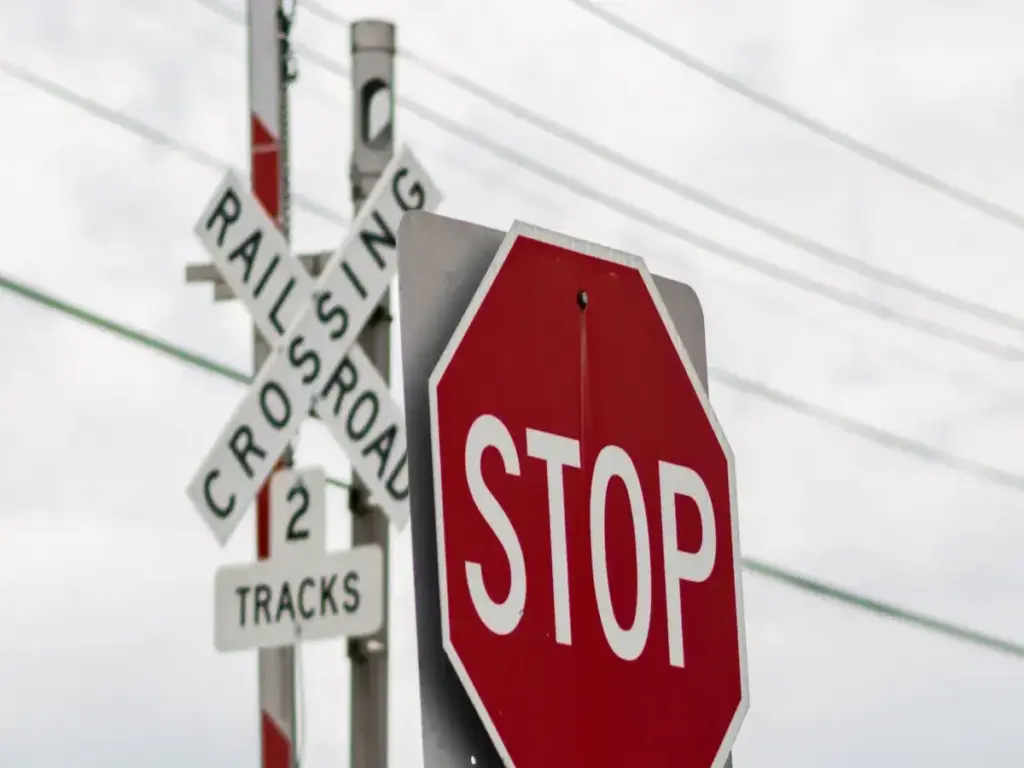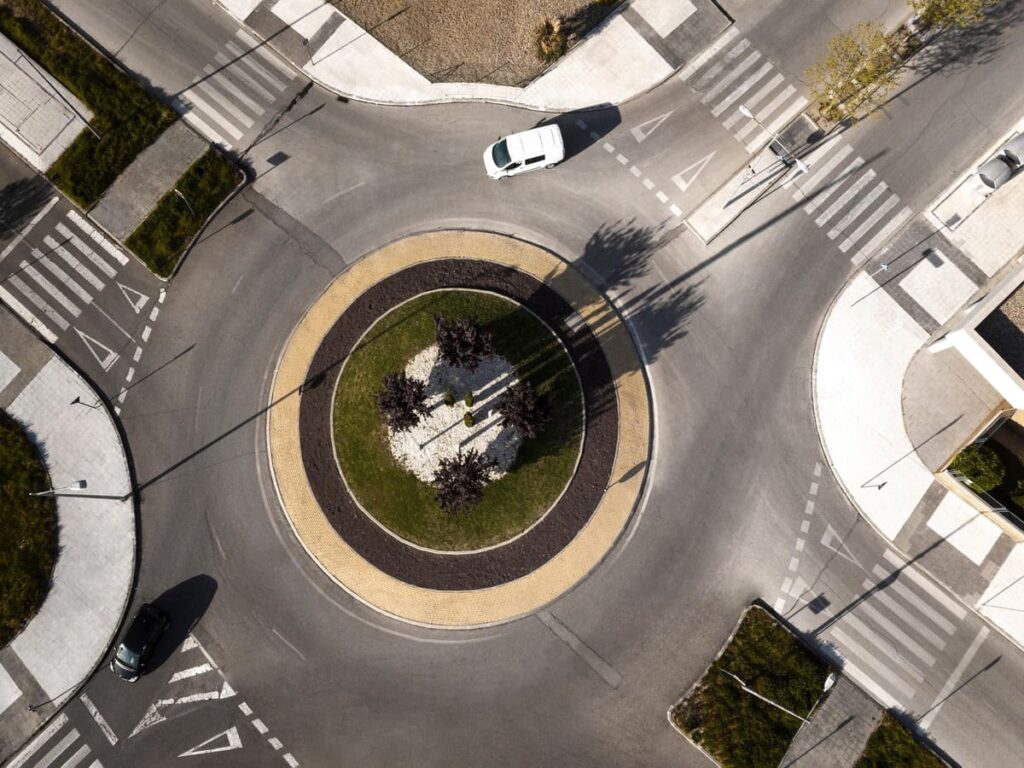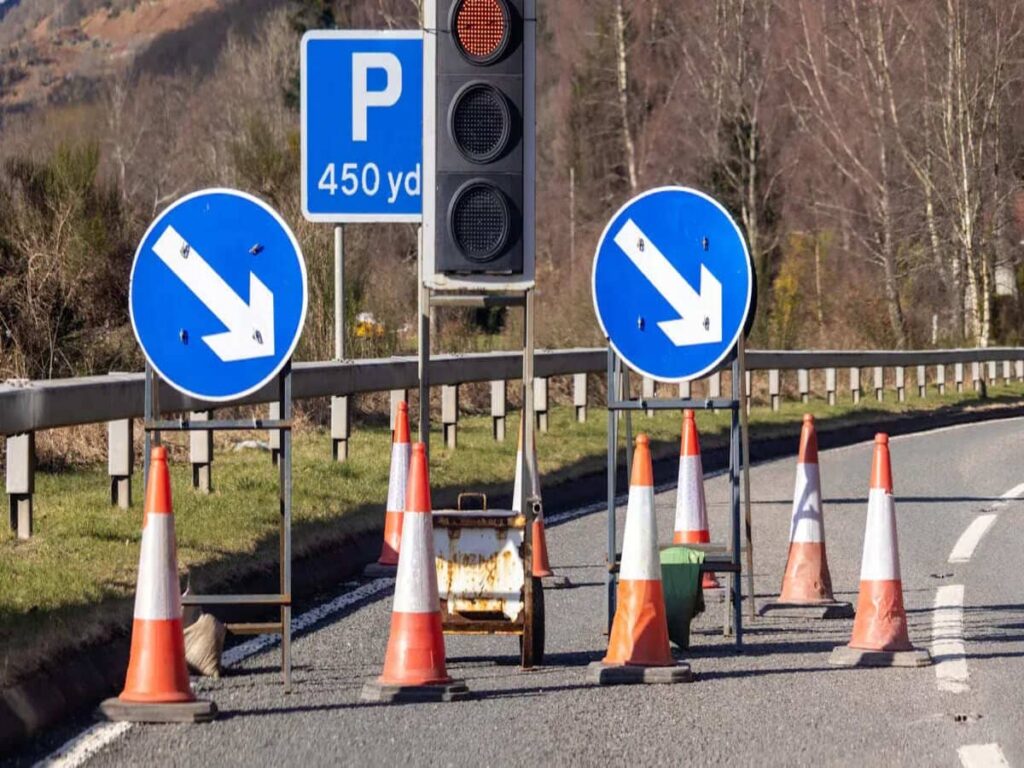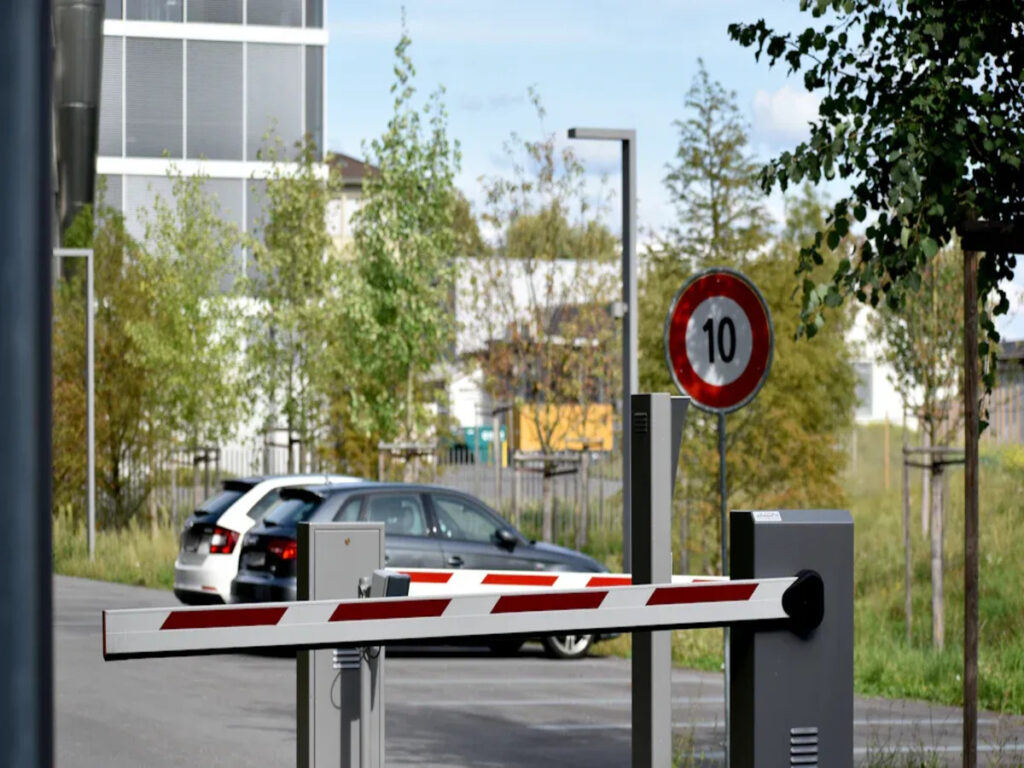
barricadas de seguridad mantener seguros a las personas y los automóviles. Separan las áreas de trabajo del tráfico. Ayudan a guiar a las personas y los autos de forma segura. Los países tienen reglas para estas barreras. Las reglas ayudan a hacer que el trabajo sea más seguro y detener los accidentes. Las reglas son diferentes en cada país. Cambian el diseño, materiales, y cómo poner las barreras. Esto es para adaptarse a los peligros locales.. Por ejemplo, concreto, acero, y las barreras de plástico tienen trabajos especiales. También siguen reglas diferentes.:
| Tipo | Características de diseño | Materiales | Método de instalación |
|---|---|---|---|
| Barrera de concreto | Hecho más fuerte con soporte adicional | Concreto, acero | Pegado en su lugar con cemento |
| Barreras de acero | Largo y cubierto con una capa de zinc. | Acero galvanizado | Aparcar al costado de las carreteras |
| Barreras de plástico | Dóblate fácilmente y absorbe los golpes. | Plástico/polímero | Se puede mover o arreglar |
En Optraffic, Entendemos la importancia de utilizar las barricadas de seguridad adecuadas que cumplan con las regulaciones y estándares locales.. Nuestro barreras de tráfico están diseñados para ofrecer la máxima seguridad y durabilidad garantizando al mismo tiempo el cumplimiento de las normas de su país.. Explore nuestra gama de barricadas de tráfico hoy para mantener seguras sus zonas de trabajo y reducir los accidentes..
Control de llave
- Las barricadas de seguridad ayudan a mantener seguros a las personas y los automóviles. Guían el tráfico y muestran dónde están las zonas peligrosas. Existen diferentes tipos para diferentes usos y materiales..
- Estándares internacionales como DIN EN 1317, ASTM F2656, y Pas 13 son importantes. Se aseguran de que barricadas estén probadas y certificadas. Esto ayuda a mantener las carreteras seguras en la vida real..
- EE. UU., Reino Unido, y Australia tienen sus propias reglas para el diseño de barricadas.. También tienen reglas de reflectividad y cumplimiento.. Estas reglas se ajustan a las necesidades y entornos locales..
- Los fabricantes deben cambiar las barricadas para seguir las reglas de cada país. Necesitan utilizar los materiales adecuados y obtener certificaciones.. Los controles periódicos ayudan a mantener la seguridad y cumplir la ley..
- Las pruebas y las condiciones locales son diferentes en cada lugar.. Esto hace que sea difícil tener las mismas reglas en todas partes.. Entonces, es importante seguir verificando y hablando con las autoridades para mantenerse a salvo.
Barricadas de seguridad y su función
Definición y tipos
Las barricadas de seguridad son barreras que mantienen a las personas y a los coches alejados del peligro.. Ayudan a controlar dónde pueden ir las personas y los coches.. Esto evita accidentes en lugares concurridos y en el trabajo.. Las autoridades clasifican las barricadas según lo que hacen y cómo se hacen.. La siguiente tabla muestra los principales tipos utilizados en muchos países.:
| Categoría de barricada | Descripción | Subtipos / Ejemplos |
|---|---|---|
| Barricadas peatonales | Se utiliza para guiar a las personas en eventos., escuelas, y aparcamientos. Son fáciles de ver y se pueden unir.. | Fabricado con plástico ligero que no se rompe con la luz solar.. Encajan y funcionan dentro o fuera.. |
| Barreras de tráfico | ayudar a moverse, detener, o alejar los coches del peligro o de las obras. | Conos de tráfico, barriles, postes, y barreras tipo A. Algunos tienen carteles o luces.. |
| Barricadas de construcción de carreteras | Se utiliza para detener o girar vehículos rápidos en carreteras y autopistas con mucho tráfico.. | El tipo I tiene un panel brillante. El tipo II tiene dos paneles.. El tipo III tiene tres o más paneles para cerrar caminos.. |
| Otras barricadas comunes | Se utiliza para seguridad a corto plazo o para mostrar dónde está el peligro.. | Barreras de Jersey y barras cónicas llenas de agua. Son fáciles de usar y mover.. |
Nota: Cada tipo de barricada se enfrenta a ciertos peligros y funciona en diferentes lugares., como carreteras urbanas o grandes autopistas.
Importancia en la Seguridad Vial
Las barricadas de seguridad ayudan a detener accidentes manteniendo a las personas y los automóviles alejados del peligro.. Los estudios demuestran que el uso de estas barreras con otras medidas de seguridad reduce los accidentes y mantiene seguros a los trabajadores.. Los expertos dicen que las barreras protegen a los trabajadores y ayudan a todos a pensar más en la seguridad. Ver cómo funcionan las barricadas en tiempo real ayuda a detectar y solucionar peligros rápidamente. Esto hace que los accidentes graves sean menos probables..
Sistemas de retención de vehículos, como barreras en el camino, debe funcionar bien en la vida real. Una investigación en Alemania muestra que algunas pruebas no coinciden con los problemas reales de las carreteras. Esto significa que las reglas y los diseños deben cambiar con frecuencia.. Esto mantiene seguros a todos los usuarios de la carretera..
Estándares globales de seguridad para barreras de seguridad
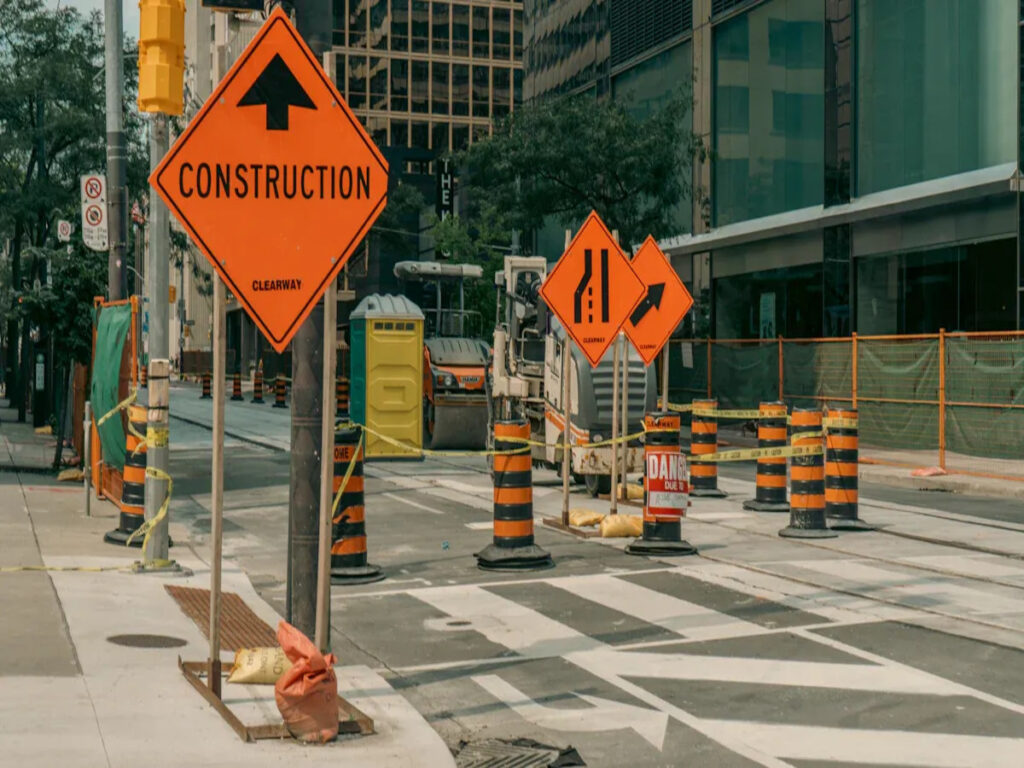
Estándares internacionales clave
Los estándares de seguridad globales ayudan a que las barreras de seguridad sean seguras. Estas reglas le dicen a la gente cómo construir y usar barreras.. Se aseguran de que las barreras funcionen bien en la vida real.. La norma europea DIN EN 1317 da reglas para los sistemas de retención en carretera. Explica cómo hacer pruebas de choque y qué resultados se necesitan.. TU ÚNICO 1317 tiene diferentes partes, uno 1317-1, EN 1317-2, y 1317-3. Cada parte explica cómo probar las barreras y qué se necesita para que pasen..
TU ÚNICO 1317 Tiene cuatro niveles principales de contención.: Temporario (T), Normal (norte), Alto (H), y muy alto (H4). Cada nivel es para diferentes peligros y caminos.. Las barreras deben pasar grandes pruebas de choque con ciertos vehículos y velocidades.. Las pruebas comprueban si la barrera puede detener o girar un vehículo. También observan cuánto se dobla la barrera y si las personas que están dentro están a salvo..
La norma americana ASTM F2656 muestra cómo probar barreras perimetrales con vehículos reales. Dice que vehículos usar, sus pesos, y las velocidades para las pruebas. ASTM F2656 proporciona clases de protección según la distancia que atraviesa un vehículo y cuánto se dobla la barrera.. Esta regla también verifica si las personas que están adentro están seguras y necesita informes completos para cada prueba..
NO 13, de la Institución Británica de Estándares, da consejos para el uso de barreras de seguridad en el trabajo. No necesita pruebas difíciles ni certificados, pero ayuda a las personas a utilizar las mejores prácticas.. NO 68, otro gobierno británico, es para barreras que impiden que los vehículos entren en lugares protegidos. Indica cómo probar estas barreras y cómo calificar su desempeño..
Nota: Barreras de seguridad y barricadas no son lo mismo. Las barreras de seguridad son fuertes y están diseñadas para detener o girar vehículos.. Las barricadas son más ligeras y ayudan a guiar a las personas o bloquear lugares.. Las barreras de seguridad deben seguir reglas estrictas., Pero las barricadas tienen reglas más fáciles..
Pruebas y Certificación
Las pruebas y la certificación garantizan que las barreras sean seguras. Grupos como TUV prueban barreras para ver si funcionan bien. TUV es conocido por ser estricto y justo.. Si TUV certifica una barrera, Significa que la barrera pasó duras pruebas y sigue las reglas mundiales..
TU ÚNICO 1317 utiliza grandes pruebas de choque para comprobar cómo funcionan las barreras. Estas pruebas utilizan coches reales y comprueban si la barrera puede detenerlos o girarlos.. La norma también utiliza modelos informáticos para adivinar cómo actúan las barreras en caso de colisión.. Estos modelos ayudan a los ingenieros a crear mejores barreras y comprobar si son lo suficientemente seguras..
ASTM F2656 necesita pruebas en laboratorios especiales. Las pruebas utilizan velocidades y pesos de automóviles establecidos.. Los resultados muestran cuánto se mueve la barrera y hasta dónde llega el coche.. Las barreras obtienen una clase de protección a partir de estos resultados. La norma también comprueba si las personas en el coche están seguras..
Algunas reglas, como PAS 13, no necesita pruebas ni certificados. Dan consejos en lugar de reglas estrictas.. Otras reglas, como TU ÚNICO 1317 y ASTM F2656, Necesita muchas pruebas y controles por parte de otros grupos.. Esto impide que las empresas solo muestren buenos resultados. Se asegura de que todas las barreras estén seguras en todas partes..
- TU ÚNICO 1317-1/2 establecer clases para los sistemas de retención de vehículos y utilizar pruebas de choque como controles.
- Los modelos analíticos vinculan la fuerza de las barreras a la carretera y al tráfico.
- EN 1317-7 y 1317-8 agregar reglas para los extremos de las barreras y para mantener seguros a los motociclistas.
- La certificación necesita tanto pruebas de choque como modelos informáticos para comprobar la seguridad de las barreras..
Consejo: Los constructores y trabajadores siempre deben comprobar si una barrera tiene certificado de otro grupo.. Esto demuestra que la barrera es segura y protegerá a las personas en accidentes reales..
Regulaciones de barricadas de seguridad de EE. UU.
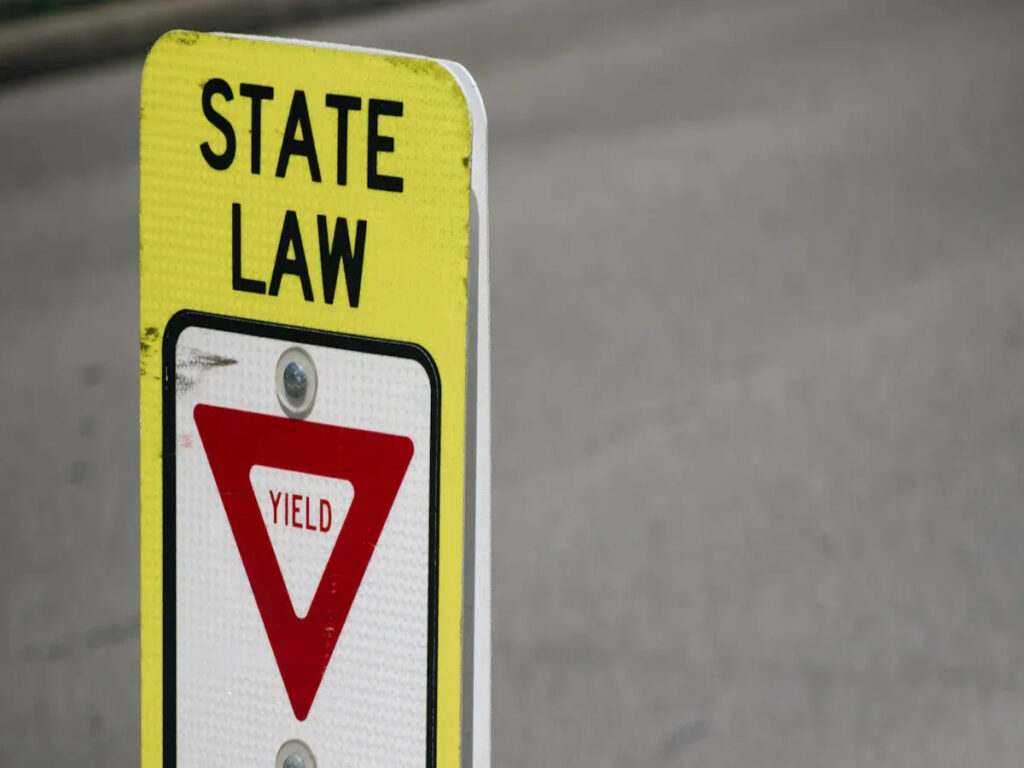
Descripción general de MUTCD
El Manual en dispositivos de control de tráfico uniformes (Muescato) Da las principales reglas para barricadas de seguridad en los Estados Unidos.. Este manual garantiza que todos vean las mismas señales y barreras en todas partes.. El MUTCD exige que las barricadas de seguridad y los dispositivos de canalización sean fáciles de ver, incluso de noche o cuando está oscuro. Estas reglas ayudan a los conductores a moverse con seguridad y muestran dónde está el peligro., como en los extremos de las carreteras o carriles cerrados. La buena ubicación y el diseño evitan que los automóviles entren en lugares que no deberían. Los trabajadores están más seguros porque el MUTCD ayuda a mantener el mismo control del tráfico en todo el país..
tipos yo, II, III
El MUTCD tiene tres tipos principales de barricadas.. Cada tipo se utiliza para un trabajo y lugar diferente.:
- Tipo I: Esta barricada tiene un riel reflectante.. Es mejor para mover el tráfico alrededor de pequeños peligros o marcar pequeñas obras viales..
- Tipo II: Esta barricada tiene dos rieles reflectantes.. Es más fácil de ver y es bueno para carreteras muy transitadas o áreas de trabajo más grandes..
- Tipo III: Esta barricada tiene tres o más rieles reflectantes.. Se utiliza para cerrar carreteras enteras o bloquear grandes peligros..
Cada tipo utiliza colores brillantes y marcas claras.. El número y la ubicación de los rieles ayudan a los conductores a saber qué tan riesgosa es el área..
Materiales reflectantes
Los materiales reflectantes son importantes para que las barricadas de seguridad sean fáciles de ver por la noche.. El MUTCD proporciona reglas sobre qué tipo y grado de láminas reflectantes utilizar. Estos materiales ayudan a los conductores y peatones a ver las barricadas cuando está oscuro., Entonces los accidentes suceden menos. La siguiente tabla muestra los principales grados de láminas reflectantes y cómo se utilizan.:
| Grado de láminas reflectantes | Descripción | Contexto de uso | Impacto en la visibilidad |
|---|---|---|---|
| Grado de ingeniero | Láminas reflectantes de nivel básico. | Señales normales en zonas seguras. | Visibilidad estándar para entornos de bajo riesgo |
| Grado de alta intensidad | Más brillante que el grado de ingeniero | Carreteras ocupadas, zonas de trabajo | Visibilidad mejorada en áreas de tráfico moderado a alto |
| Grado de diamante | Más brillante, tecnología avanzada | Caminos rápidos, letreros aéreos, alta visibilidad | La más alta reflectividad, reduce los accidentes, dura 10 años |
- Las barricadas de tráfico utilizan materiales reflectantes para ayudar a las personas a verlas por la noche..
- Los colores brillantes y las láminas reflectantes garantizan que las barricadas sean fáciles de detectar en la oscuridad..
- La alta visibilidad ayuda a mantener seguros tanto a los peatones como a los conductores en la carretera..
Estándares de barricadas de seguridad del Reino Unido
Tsrgd 2016
El Traffic Signs Regulations y direcciones generales (Tsrgd) 2016 es una ley en el Reino Unido. Le dice a la gente cómo gestionar el tráfico cuando las carreteras cambian o se bloquean.. Esta regla garantiza que todas las obras viales y eventos utilicen las señales y barreras adecuadas.. Tsrgd 2016 dice que las barricadas de seguridad deben ser fáciles de ver y lo suficientemente fuertes. Hay que colocarlos en el lugar correcto y durar mucho tiempo.. Los ayuntamientos controlan las barreras con frecuencia. Miran para ver si las señales y barreras son seguras y están en el lugar correcto.. Si algo anda mal, Pueden imponer multas o solicitar nuevas barreras de inmediato..
Diseño y Materiales
Estándares británicos como BS 6180:2011 y Pas 13 ayudar a las personas a diseñar y construir barricadas de seguridad. Estas reglas dicen que las barreras deben ser fuertes y rígidas.. No deben doblarse más de 25 mm cuando se empuja. Las barreras deben resistir a las grandes multitudes y a los coches.. La Guía del Reino Unido sobre seguridad en campos deportivos ofrece más consejos. Un Certificador Aprobado debe verificar las barreras bajo el Esquema SER. Los materiales y su construcción deben seguir las normas británicas.. Los colores también son importantes. Amarillo y negro significan ten cuidado.. Rojo y blanco significan peligro. NO 13 dice que las barreras deben pasar pruebas de impacto con un poco más de seguridad. Las pruebas utilizan herramientas y pasos especiales..
| Aspecto | Requisito / Especificación |
|---|---|
| Normas aplicables | Licenciatura 6180:2011, Licenciatura 6399 Parte 1, NO 13 |
| Fortaleza & Rigidez | Debe soportar cargas específicas; limitar la deflexión a 25 milímetros |
| Codificación de colores | Amarillo/negro por precaución, rojo/blanco para advertencia |
| Proceso de dar un título | Certificador Aprobado bajo Esquema SER |
| Pruebas | NO 13 calificaciones de impacto, procedimientos aprobados |
Reflectividad
Las normas del Reino Unido dicen que las barricadas de seguridad y las señales de obras viales deben utilizar materiales reflectantes. Estos deben seguir BS 8442 (RA2) o BS EN 12899-1 para láminas microprismáticas. Existen diferentes clases de láminas reflectantes.. Clase 1, Clase 2, y Clase 1W son los tipos principales. La clase 1W es para carreteras rápidas para que los conductores puedan ver mejor. Los ayuntamientos comprueban estas normas mirando las barreras, Incluso por la noche. Utilizan herramientas especiales llamadas retroreflectómetros.. Si un letrero está roto o descolorido, hay que cambiarlo rapido. El marcado CE en las señales demuestra que pasaron los controles de seguridad y calidad.. Una buena limpieza y mantenimiento de registros ayudan a mantener a todos seguros en las carreteras..
Reglas de barricadas de seguridad de Australia
COMO 1742
COMO 1742 es la regla principal para los dispositivos de control de tráfico en Australia. Le dice a la gente cómo diseñar., Hospedarse, y cuidar barricadas en carreteras y lugares de trabajo.. COMO 1742.3-2009 habla sobre gestión temporal del tráfico. Garantiza que las barricadas guíen los vehículos y mantengan seguros a los trabajadores.. La regla dice qué colores, formas, y tamaños de barricadas deben ser. También da consejos para el uso de materiales reflectantes.. Esto ayuda a los conductores a ver las barricadas de noche o con mal tiempo.. COMO 1742 funciona con otras reglas como AS 3845:1999. Esa regla es para los sistemas de barreras de seguridad vial., incluyendo bolardos. Estas reglas ayudan a mantener las carreteras seguras y evitan que los conductores se confundan.
Variaciones de estado
Todos los estados y territorios de Australia pueden establecer reglas adicionales. Por ejemplo, Nueva Gales del Sur, Victoria, y Queensland podrían querer diferentes formas de levantar barricadas o utilizar materiales especiales.. Los grupos de carreteras locales comprueban si los trabajadores siguen ambos AS 1742 y reglas estatales. Algunos estados quieren más pruebas o certificados antes de utilizar una barricada en la vía pública. Los trabajadores deben leer las reglas locales antes de comenzar un trabajo.. Esto evita las multas y mantiene a todos seguros.
Nota: Las reglas estatales pueden cambiar qué barricadas están permitidas, que brillantes deben ser, y con qué frecuencia se revisan.
Durabilidad
Las barricadas en Australia deben durar mucho tiempo y mantenerse fuertes. Necesitan soportar el mal tiempo., muchos autos, e incluso se estrella. COMO 3845:1999 y como 1742.3-2009 decir cómo probar y comprobar la resistencia y la larga vida útil de las barricadas. Bolardos, que son una especie de barricada, debe pasar pruebas de choque. Desde 2009, Australia utiliza ASTM F2656 y F3016 para pruebas de choque. Los bolardos certificados se prueban para garantizar que puedan recibir golpes reales y mantener seguras a las personas y las cosas..
- Los bolardos se pueden fabricar con hormigón., acero, o plástico. Los bolardos de acero suelen estar cubiertos para evitar la oxidación..
- Las pruebas comprueban si las barricadas se mantienen fuertes después de ser atropelladas por un coche.
- Las barricadas deben revisarse y repararse con frecuencia para que sigan funcionando bien..
Elegir la barricada adecuada depende de lo transitada que esté la carretera., que autos lo usan, y lo que el lugar necesita. Usando certificado, Los productos sometidos a pruebas de choque ayudan a prevenir accidentes y cumplen con la ley..
Análisis comparativo: A NOSOTROS, Reino Unido, Australia
Diferencias de diseño
Cada país tiene sus propias reglas para las barricadas de seguridad.. En los Estados Unidos, el MUTCD da las reglas principales. Las barricadas en EE.UU. utilizan colores brillantes y materiales resistentes.. Hay tres tipos: Tipo I, II, y III. Las barricadas tipo III bloquean carreteras enteras con tres o más rieles.
El Reino Unido utiliza TSRGD 2016 y estándares británicos. Las barricadas en el Reino Unido deben ser fuertes y no doblarse mucho.. No deben doblarse más de 25 mm cuando se empuja. Amarillo y negro significan precaución. Rojo y blanco significan peligro. Las barreras deben pasar pruebas de impacto y ser revisadas por certificadores aprobados..
Australia usa como 1742 y como 3845 por sus reglas. Las barricadas deben durar mucho tiempo y resistir el mal tiempo.. Necesitan mantenerse fuertes después de ser atropellados por autos. Cada estado puede agregar sus propias reglas., entonces los diseños pueden cambiar. Las barricadas están hechas de acero., concreto, o plástico. Deben pasar pruebas de choque.
Nota: Los tres países quieren barricadas fuertes y fáciles de ver.. Las reglas locales cambian su apariencia. Los constructores deben comprobar las normas nacionales y locales antes de levantar una barricada..
Normas de reflectividad
Los materiales reflectantes ayudan a las personas a ver las barricadas de noche o bajo la lluvia.. Cada país tiene su propia manera de calificar la reflectividad.
- Australia utiliza clases bajo AS/NZS 1906.1:
- hay clase 1, 2, y 3. Clase 3 es el más brillante para carreteras transitadas o rápidas.
- Las reglas locales dicen qué clase usar. Las láminas reflectantes estadounidenses pueden no ajustarse a las normas australianas.
- Estados Unidos utiliza calificaciones en el MUTCD:
- Grado de ingeniero, Grado de alta intensidad, y grado de diamante.
- Diamond Grade es el más brillante y se utiliza para carreteras rápidas..
- El MUTCD dice que las señales deben limpiarse y revisarse con frecuencia.
- Los estudios muestran que Diamond Grade puede reducir los accidentes hasta en 46% y permanece brillante durante más de diez años.
- El Reino Unido utiliza Class 1, Clase 2, y clase 1w. Estos siguen BS 8442 y BS EN 12899-1. La clase 1W es para carreteras rápidas y ofrece la mejor visibilidad..
Los tres países quieren que las barricadas sean fáciles de ver. Usan diferentes palabras y pruebas.. Los constructores deben utilizar el material reflectante adecuado para cada país.
Aplicación
Autoridades de cada país verifican si las barricadas siguen las reglas. Utilizan diferentes formas para asegurarse de que los constructores cumplan la ley.
| País | Descripción del mecanismo de aplicación | Marco regulatorio / Autoridad |
|---|---|---|
| Reino Unido | Los operadores deben mostrar casos de seguridad que enumeren los peligros y cómo controlarlos para sitios costa afuera.. | Instalaciones costa afuera (Estuche de seguridad) Regulaciones 2005 e instalaciones costa afuera (Directiva de seguridad en alta mar) Regulaciones 2015 |
| Australia | Los operadores deben encontrar peligros y gestionar riesgos.. NOPSEMA comprueba si siguen las normas. | Almacenamiento de petróleo y gases de efecto invernadero en alta mar (Seguridad) Regulaciones 2009; Autoridad Nacional de Gestión Ambiental y de Seguridad del Petróleo Marino (NOPSEMA) |
| Estados Unidos | No se encuentran en los documentos detalles especiales de aplicación de las barricadas de seguridad.. | N / A |
Los ayuntamientos del Reino Unido y Australia revisan barricadas y señales. Miran donde están, que fuertes son, y si son lo suficientemente brillantes. Si una barricada falla, Pueden ordenar que lo arreglen o lo reemplacen.. En los Estados Unidos, las guías MUTCD comprueban, pero las reglas pueden cambiar según el estado o la ciudad.
Los controles periódicos y las normas estrictas ayudan a mantener la seguridad en las carreteras. Los constructores que siguen las reglas evitan multas y mantienen a todos seguros.
Adaptarse a los estándares de seguridad globales
Cumplimiento para fabricantes
Los fabricantes deben seguir reglas estrictas para vender barricadas de seguridad en otros países. Cada país tiene sus propias reglas para el diseño., materiales, y como poner barricadas. Para seguir estas reglas, Los fabricantes deberían hacer algunas cosas importantes.:
- Descubra las normas de cada país antes de fabricar o vender productos..
- Prepare documentos técnicos y muestras de productos para realizar comprobaciones y pruebas..
- Obtenga certificados de grupos confiables para demostrar que los productos son seguros.
- Anote cuándo se otorgan los certificados y actualícelos si cambian las reglas.
- Sigue normas mundiales como ATEX en Europa o NEC 500/505 en los Estados Unidos.
- Revise y repare los productos con frecuencia para mantenerlos seguros.
- Enseñar a los trabajadores a aguantar, cuidar, y utilizar barricadas de seguridad.
- Utilizar acuerdos entre países para evitar volver a hacer las mismas pruebas.
- Pregunte a expertos que conocen las reglas para que le ayuden a vender en lugares nuevos..
Los controles periódicos ayudan a los fabricantes a evitar problemas e infringir la ley. Mantener buenos registros de controles y reparaciones ayuda a demostrar que siguen las reglas y facilita los controles..
Adaptación del producto
Los fabricantes necesitan cambiar sus productos para cada país.. Usan nuevos materiales, como plásticos o compuestos resistentes, para hacer que las barricadas duren más en todo tipo de clima. Algunas empresas añaden sensores o sistemas inteligentes para vigilar las barricadas y hacerlas más seguras. El uso de materiales que son buenos para el medio ambiente ayuda a cumplir las normas ecológicas y hace felices a las personas que se preocupan por el planeta..
Los fabricantes también cambian los productos según las necesidades locales.. Podrían usar diferentes colores., formas, o materiales reflectantes para cumplir con las leyes locales. Trabajar con socios o expertos locales les ayuda a saber qué necesita cada lugar.. Gastar dinero en investigación ayuda a las empresas a mantenerse al día con nuevas reglas y nuevas ideas.
Los fabricantes que prueban cosas nuevas y revisan sus productos con frecuencia pueden vender en más lugares y mantener sus productos seguros para todos..
Desafíos en la estandarización
Variaciones de prueba
Las reglas de prueba para barricadas de seguridad no son las mismas en todas partes. Cada país tiene sus propias reglas sobre qué tan rápido van los autos en las pruebas y qué vehículos usar. También tienen diferentes formas de configurar el área de prueba.. Por ejemplo, NO 13 en el Reino Unido utiliza ciertas velocidades y agrega un 5% margen de seguridad. Las reglas de ASTM cubren choques tanto lentos como rápidos. La siguiente tabla muestra algunas diferencias principales.:
| Aspecto | NO 13 (Nacional del Reino Unido) | Astm (Internacional) |
|---|---|---|
| Velocidades de impacto | Velocidades específicas con 5% factor de seguridad | Estándares separados para baja velocidad (<30 mph) y de alta velocidad (30-50 mph) impacto |
| Tipos de vehículos | Vehículos conformes definidos con sistemas de trineo | Vehículos sustitutos, incluidos los de servicio mediano. (15,000 lbs) y otros |
| Preparación del área de prueba | Configuración detallada con trineos., rampas, trampas de velocidad | Centrarse en las zonas de impacto y los índices de penetración. |
| Sistemas de calificación | Clasificaciones de impacto con factores de seguridad. | K, METRO, Clasificaciones WK que abordan diferentes niveles de amenaza |
| Alcance | Localizado, pasos procesales detallados | Marcos más amplios adaptables por países |
Las normas nacionales suelen exigir el uso de herramientas especiales., como cámaras rápidas y trineos guiados. También quieren que se hagan pruebas a diferentes alturas y temperaturas.. Por estas diferencias, Es difícil para las empresas construir una barricada que funcione en todas partes..
La Organización Mundial del Comercio quiere que los países acepten las reglas de los demás si mantienen a las personas igual de seguras, pero las necesidades locales a menudo significan que se necesitan pruebas adicionales.
Adaptaciones locales
Cada país tiene sus propios peligros y formas de trabajar., entonces sus reglas de barricada son diferentes. Clima, tipos de carreteras, y lo transitadas que están las carreteras cambian los materiales y las formas que se utilizan. En Australia, El mal tiempo significa que las barricadas deben ser muy fuertes.. En el Reino Unido, hay pruebas estrictas y reglas de color.. Algunos lugares agregan aún más reglas, lo que hace las cosas más difíciles.
- Las diferentes reglas en cada país complican las cosas.
- Los riesgos cambiantes y las formas de trabajar ponen fin a una regla para todos.
- Los altos costes de construcción y reparación de barricadas ralentizan el proceso.
- No seguir las reglas y mover las cosas puede causar retrasos.
Algunos grupos no quieren cambiar viejas costumbres, por lo que las nuevas reglas tardan más en usarse.
Estándares en evolución
Las reglas para las barricadas de seguridad han cambiado mucho en los últimos diez años.. La nueva tecnología y los datos de seguridad ahora ayudan a decidir cómo fabricar y utilizar barreras.. Por ejemplo, Las normas viales ahora utilizan mejores formas de comprobar los riesgos y el funcionamiento de las barreras.. La siguiente tabla muestra cómo algunos trabajos han cambiado sus reglas.:
| Sector industrial | Ejemplo de normas o directrices actualizadas | Impacto en los estándares y la gestión de las barricadas de seguridad |
|---|---|---|
| Transporte por carretera | Normas sobre sistemas y dispositivos de barreras de seguridad vial. | Mejora el diseño de la barrera física y los criterios de rendimiento basados en datos de seguridad. |
| Petróleo costa afuera & Gas | Principios para la gestión de barreras.; Seguridad Técnica (Edición 4); Bien integridad | Refleja la integración de enfoques avanzados de gestión de riesgos y armonización de barreras. |
Ahora, Los planes de seguridad utilizan cosas como tecnología portátil., drones, y computadoras inteligentes para detectar peligros y adivinar riesgos. Estas herramientas ayudan a las personas a detener los problemas antes de que sucedan. Pero, Estas barricadas inteligentes cuestan mucho y necesitan habilidades especiales., entonces no todos pueden usarlos todavía. Mientras las reglas siguen cambiando, Las empresas deben aprender cosas nuevas y utilizar nuevas herramientas para seguir las últimas reglas en todas partes..
Las reglas de las barricadas de seguridad no son las mismas en los EE. UU., Reino Unido, y Australia. el diseño, materiales, y la reflectividad puede ser diferente. Pero todas estas reglas intentan mantener seguros a los usuarios y trabajadores de la vía.. Los fabricantes necesitan cambiar sus productos para cada país.. También deben asegurarse de que sus productos sigan las reglas.. Es importante seguir comprobando si hay nuevos cambios en las reglas todo el tiempo., Como se muestra a continuación:
| Aspecto | Importancia del monitoreo continuo |
|---|---|
| Planta | Detiene los problemas de seguridad y mantiene todo funcionando bien |
| Proceso | Ayuda a controlar los riesgos cuando cambian las formas de trabajar. |
| Gente | Se ocupa de los riesgos cuando las organizaciones cambian. |
Hablar frecuentemente con las autoridades locales ayuda a las organizaciones a conocer las nuevas reglas.. También ayuda a solucionar problemas rápidamente y garantiza que las medidas de seguridad sigan la ley..
Preguntas frecuentes
¿Cuál es la principal diferencia entre una barricada y una barrera de seguridad??
Una barricada ayuda a guiar o bloquear a personas y automóviles.. Se construye una barrera de seguridad para impedir que los coches entren en lugares peligrosos. Las barreras de seguridad deben seguir reglas más estrictas y pasar pruebas de choque.
¿Por qué los países tienen diferentes regulaciones sobre barricadas??
Cada país tiene sus propias carreteras., clima, y peligros. Los líderes locales establecen reglas para mantener segura a la gente en su área. Los fabricantes deben cambiar sus productos para que se ajusten a estas reglas..
¿Con qué frecuencia se deben inspeccionar las barricadas de seguridad??
Las autoridades dicen que se revisen las barricadas con frecuencia. Muchos lugares quieren controles antes y después de colocarlos.. Estos controles garantizan que las barricadas sean fáciles de ver., fuerte, y sigue las reglas locales.
¿Los materiales reflectantes difieren entre países??
Sí, Cada país utiliza sus propios tipos de materiales reflectantes.. Australia usa clase 1, 2, y 3. El Reino Unido utiliza Class 1, 2, y 1W. Estados Unidos utiliza Engineer, Alta intensidad, y grados de diamantes.
¿Puede un diseño de barricada cumplir con los estándares globales??
Generalmente, un diseño no funcionará en todas partes. Los países quieren colores diferentes, formas, y materiales. Los fabricantes suelen cambiar sus productos para adaptarse a las normas de cada país..

